Jeep Grand Cherokee owners love their cars. But no car is perfect. Common issues with the 2.4 engine include fuel line issues, oil leaks, overheating, hose, heater core, and coolant leaks at the back. These problems can be annoying and costly.
Good news! A quick fix exists for coolant leaks. A sealant can plug small holes temporarily. It’s not a long-term fix, but it gets you to the mechanic safely.
Want to know more? Keep reading.
I’ll dive deep into why Jeep Grand Cherokee coolant leak back of engine. I’ll also guide you through permanent solutions. Don’t let a leak ruin your day or your Jeep.
Stay tuned.
Jeep Grand Cherokee: Common Causes & Solution of Coolant Leaks
In this section, I’ll explore the key reasons why coolant leaks occur in this troublesome area and provide insights on how to address them.
Hose Split
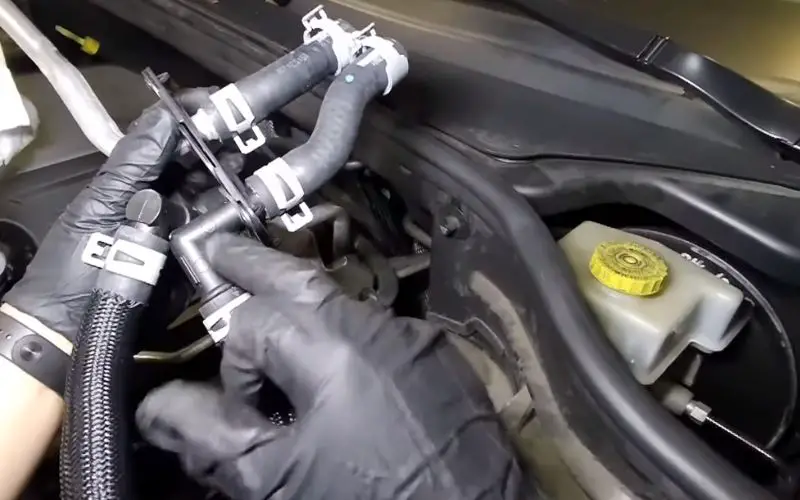
A hose split is a common issue for coolant leaks in Jeep Grand Cherokee. The hose carries coolant to keep the engine cool. When it splits, coolant leaks out. This can lead to overheating and engine damage.
Symptoms of the Problem:
| Issue | Indicators/Signs |
|---|---|
| Coolant Puddles | Puddles of coolant beneath the rear of the engine. |
| Overheating | Engine temperature rises due to coolant loss. |
| Low Coolant Level | Frequent need to top up coolant. |
| Steam from Engine | Visible steam or vapor coming from the engine area. |
| Dashboard Warning Light | Engine temperature warning light may illuminate. |
Cause of the Problem:
The primary cause of hose splitting is wear and tear. Over time, exposure to high engine temperatures and the constant flow of coolant can weaken the hose material.
Age and usage contribute to this problem.
Extreme temperatures, such as those experienced in hot climates, can accelerate the degradation of the hose material.
Step-by-Step Solution:
| Step | Action | |
|---|---|---|
| 1. | Identify the Leak | Check under the car for a puddle. Use a flashlight to find the split hose. |
| 2. | Turn Off Engine | Make sure the engine is off and cool before you start. |
| 3. | Remove Old Hose | Use pliers to remove clamps and pull out the damaged hose. |
| 4. | Install New Hose | Put the new hose in place and secure it with clamps. |
| 5. | Refill Coolant | Fill the coolant reservoir to the proper level. |
| 6. | Test | Start the engine and check for leaks. Make sure the problem is fixed. |
So, don’t ignore a split hose. It’s an easy fix that can save your engine from big problems.
Faulty Gaskets Or Seals
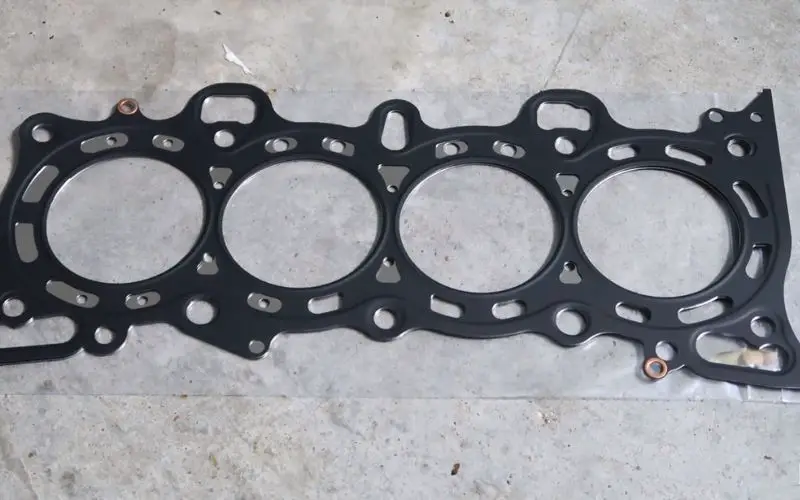
Faulty gaskets or seals are another reason for coolant leaks in Jeep Grand Cherokee.
These parts form a tight seal between engine components. When they fail, coolant can escape. This leads to engine overheating and can cause severe damage.
Symptoms of the Problem:
| Issue | Indicators/Signs |
|---|---|
| Visible Coolant Leak | Obvious coolant puddles beneath the rear of the engine. |
| Engine Overheating | Engine temperature rises due to coolant loss. |
| Low Coolant Levels | Frequent need to replenish coolant. |
| Steam Emission | Visible steam or vapor rising from the engine. |
| Coolant Odor | Detectable sweet smell of coolant around the engine bay. |
Cause of the Problem:
The main cause of faulty gaskets or seals is wear and tear. These components endure extreme conditions within the engine, including temperature fluctuations and constant exposure to coolant.
Over time, the material of gaskets and seals can deteriorate, leading to cracks, breaks, or poor sealing.
Step-by-Step Solution:
| Step | Action | |
|---|---|---|
| 1. | Locate the Fault | Use a flashlight to check gaskets and seals for leaks. |
| 2. | Engine Off | Turn off the engine and let it cool. |
| 3. | Remove Parts | Take off the parts blocking access to the faulty gasket or seal. |
| 4. | Replace | Put in the new gasket or seal. |
| 5. | Reassemble | Put back all removed parts. |
| 6. | Refill and Test | Fill up the coolant and start the engine to check for leaks. |
Cracked Radiator

A cracked radiator is a serious issue in Jeep Grand Cherokee engines. The radiator cools the engine.
When it cracks, coolant leaks out. This can lead to engine overheating and costly damage.
Symptoms of the Problem:
| Issue | Indicators/Signs |
|---|---|
| Visible Coolant Puddles | Coolant collecting beneath the rear of the engine. |
| Overheating Engine | The engine’s temperature rises due to coolant loss. |
| Low Coolant Level | Frequent need to add more coolant. |
| Steam Emission | Visible steam or vapor rising from the engine. |
| Radiator Damage | Visible cracks or damage to the radiator itself. |
Cause of the Problem:
The primary cause of a cracked radiator is continuous exposure to extreme conditions.
Radiators endure significant temperature fluctuations, from extreme heat to freezing cold, and this can weaken the radiator’s material over time.
Additionally, physical damage, such as impacts or accidents, can also lead to radiator cracks.
Step-by-Step Solution:
| Step | Action | |
|---|---|---|
| 1. | Identify the Crack | Check the radiator for visible cracks. |
| 2. | Cool Down | Turn off the engine and let it cool. |
| 3. | Drain Coolant | Remove the old coolant from the radiator. |
| 4. | Remove Radiator | Take out the damaged radiator. |
| 5. | Install New Radiator | Put in the new radiator. |
| 6. | Refill and Test | Add new coolant and run the engine to check for leaks. |
Corroded Or Damaged Pipes
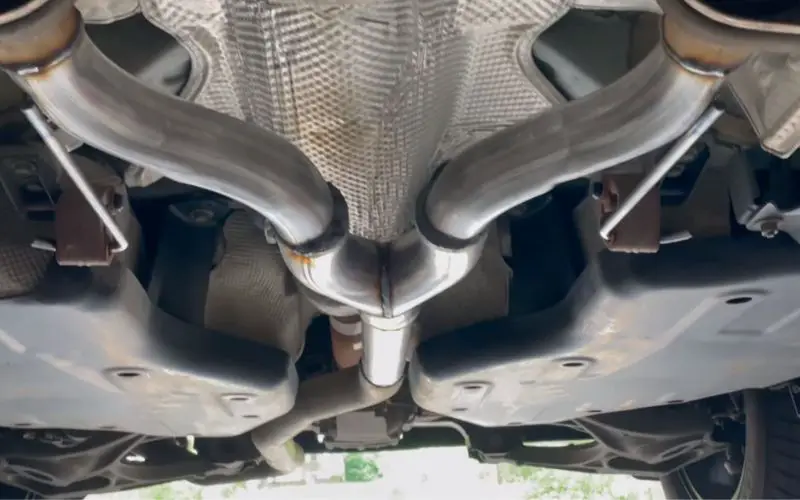
Corroded or damaged pipes can cause coolant leaks in Jeep Grand Cherokee engines. These pipes carry coolant to keep the engine cool.
When they get damaged, coolant can leak. This can lead to engine overheating and other issues.
Symptoms of the Problem:
| Issue | Indicators/Signs |
|---|---|
| Noticeable Coolant Puddles | Accumulation of coolant beneath the rear of the engine. |
| Engine Overheating | The engine temperature rises due to coolant loss. |
| Frequent Need for Coolant Refills | Adding coolant more often than usual. |
| Visible Steam Emission | Observable steam or vapor emanating from the engine area. |
| Deterioration of Pipe Material | Visible signs of corrosion or damage on the pipes. |
Cause of the Problem:
The primary cause of corroded or damaged pipes is the harsh conditions they endure within the engine compartment.
Exposure to extreme temperatures, constant circulation of coolant, and potential contact with debris or road hazards can lead to the deterioration of these pipes over time.
Step-by-Step Solution:
| Step | Action | |
|---|---|---|
| 1. | Locate the Pipe | Find the damaged or corroded pipe. |
| 2. | Remove Old Pipe | Take out the damaged pipe. |
| 3. | Install New Pipe | Put in a new, undamaged pipe. |
| 4. | Check and Refill Coolant | Add new coolant and check for leaks. |
| 5. | Test Drive | Take a short drive to make sure the problem is fixed. |
Fuel Line Issues
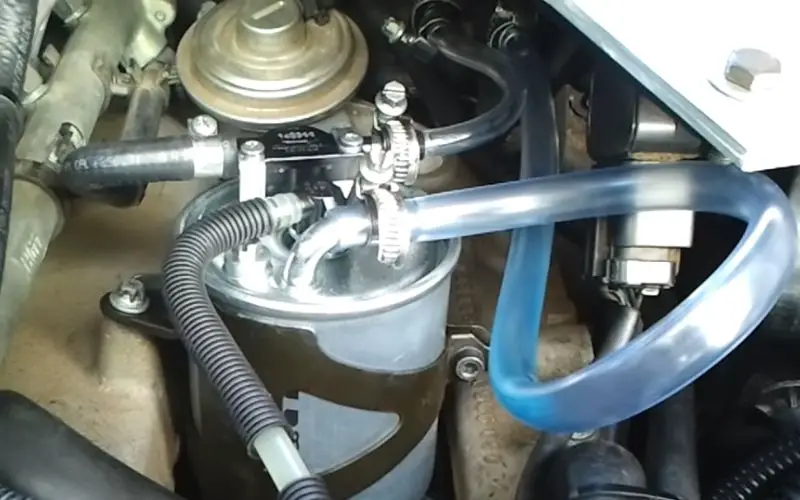
Fuel line issues can lead to coolant leaks in Jeep Grand Cherokee engines. Because the fuel line is close to the coolant system.
A damaged fuel line can affect the coolant system. This can cause coolant to leak and mix with fuel.
Symptoms of the Problem:
| Issue | Indicators/Signs |
|---|---|
| Smell of Gas in the Cabin | Noticeable smell of gas inside the car’s cabin. |
| Coolant Level Drops Quickly | Rapid depletion of coolant level in the reservoir. |
| Engine Misfires or Stalls | Engine sputters, misfires, or stalls during operation. |
| Fuel Efficiency Drops | Decreased miles per gallon (MPG) or fuel efficiency. |
Cause of the Problem: Fuel lines can get damaged or wear out. This can happen due to age, poor maintenance, or road conditions.
Step-by-Step Solution:
| Step | Action | |
|---|---|---|
| 1. | Identify the Issue | Locate the damaged fuel line. |
| 2. | Replace Fuel Line | Remove the damaged fuel line and install a new one. |
| 3. | Check Coolant | Refill and check for any coolant leaks. |
| 4. | Test | Start the engine and check for leaks or other issues. |
How to Take Preventive Measures?
Preventing problems is necessary to a long-lasting vehicle. Regular checks can save you time and money.
- First, always read your car’s manual. It tells you when to get services like oil changes.
- Next, keep an eye on fluid levels. Low coolant or oil can lead to bigger issues.
- Tire pressure is also crucial. Check it every month. Proper tire pressure improves gas mileage and safety. Don’t forget the brakes. Listen for any strange noises when you use them.
- Last but not least, pay attention to warning lights on the dashboard. They’re your car’s way of asking for help. Ignoring them can lead to costly repairs.
So, make prevention a habit. Your car will thank you.
Final Thoughts
Jeep Grand Cherokee owners may encounter various coolant leak issues at the back of the engine. Recognizing the symptoms and causes is crucial to addressing these problems effectively.
With step-by-step solutions and preventive measures, you can ensure your Jeep stays in top shape, saving you both time and money on costly repairs.
Regular maintenance and vigilance are the key points to a trouble-free ride.
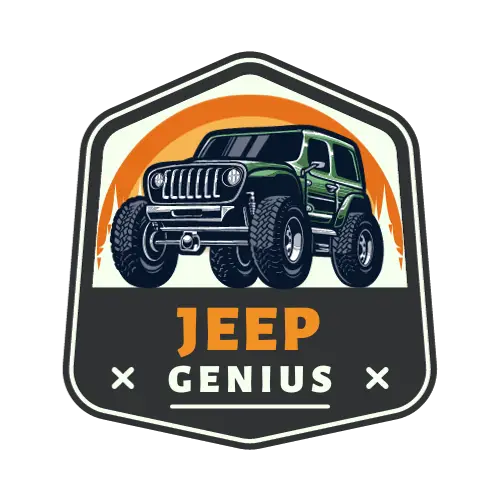
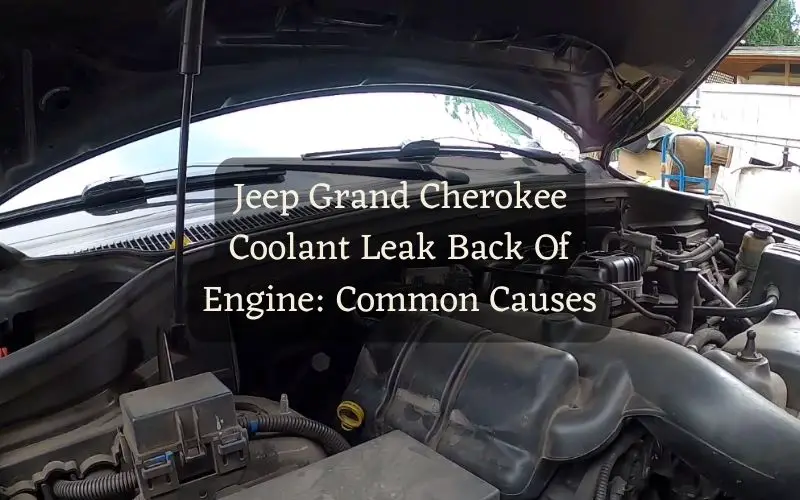
Leave a Reply